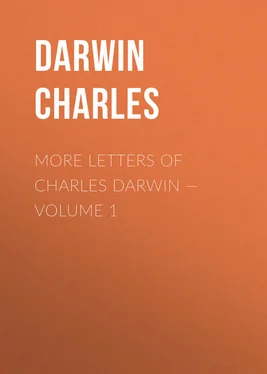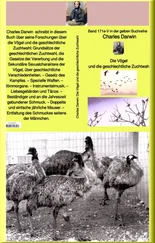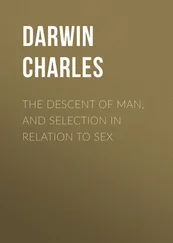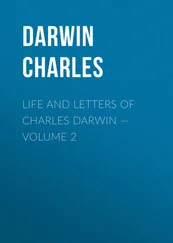Charles Darwin - More Letters of Charles Darwin — Volume 1
Здесь есть возможность читать онлайн «Charles Darwin - More Letters of Charles Darwin — Volume 1» — ознакомительный отрывок электронной книги совершенно бесплатно, а после прочтения отрывка купить полную версию. В некоторых случаях можно слушать аудио, скачать через торрент в формате fb2 и присутствует краткое содержание. Жанр: foreign_antique, foreign_prose, на английском языке. Описание произведения, (предисловие) а так же отзывы посетителей доступны на портале библиотеки ЛибКат.
- Название:More Letters of Charles Darwin — Volume 1
- Автор:
- Жанр:
- Год:неизвестен
- ISBN:нет данных
- Рейтинг книги:4 / 5. Голосов: 1
-
Избранное:Добавить в избранное
- Отзывы:
-
Ваша оценка:
- 80
- 1
- 2
- 3
- 4
- 5
More Letters of Charles Darwin — Volume 1: краткое содержание, описание и аннотация
Предлагаем к чтению аннотацию, описание, краткое содержание или предисловие (зависит от того, что написал сам автор книги «More Letters of Charles Darwin — Volume 1»). Если вы не нашли необходимую информацию о книге — напишите в комментариях, мы постараемся отыскать её.
More Letters of Charles Darwin — Volume 1 — читать онлайн ознакомительный отрывок
Ниже представлен текст книги, разбитый по страницам. Система сохранения места последней прочитанной страницы, позволяет с удобством читать онлайн бесплатно книгу «More Letters of Charles Darwin — Volume 1», без необходимости каждый раз заново искать на чём Вы остановились. Поставьте закладку, и сможете в любой момент перейти на страницу, на которой закончили чтение.
Интервал:
Закладка:
With respect to the Copley medal (39/3. The Copley Medal was given to Lyell in 1858.), I have a strong feeling that Lyell has a high claim, but as he has had the Royal Medal I presume that it would be thought objectionable to propose him; and as I intend (you not objecting and converting me) to propose W. for the Royal, it would, of course, appear intolerably presumptuous to propose for the Copley also.
LETTER 40. TO T.H. HUXLEY. Down, June 10th, 1855.
Shall you attend the Council of the Royal Society on Thursday next? I have not been very well of late, and I doubt whether I can attend; and if I could do anything (pray conceal the scandalous fact), I want to go to the Crystal Palace to meet the Horners, Lyells, and a party. So I want to know whether you will speak for me most strongly for Barrande. You know better than I do his admirable labours on the development of trilobites, and his most important work on his Lower or Primordial Zone. I enclose an old note of Lyell's to show what he thinks. With respect to Dana, whom I also proposed, you know well his merits. I can speak most highly of his classificatory work on crustacea and his Geographical Distribution. His Volcanic Geology is admirable, and he has done much good work on coral reefs.
If you attend, do not answer this; but if you cannot be at the Council, please inform me, and I suppose I must, if I can, attend.
Thank you for your abstract of your lecture at the Royal Institution, which interested me much, and rather grieved me, for I had hoped things had been in a slight degree otherwise. (40/1. "On certain Zoological Arguments commonly adduced in favour of the hypothesis of the Progressive Development of Animal Life," Discourse, Friday, April 20, 1855: "Proceedings R.I." (1855). Published also in "Huxley's Scientific Memoirs." The lecturer dwelt chiefly on the argument of Agassiz, which he summarises as follows: "Homocercal fishes have in their embryonic state heterocercal tails; therefore heterocercality is, so far, a mark of an embryonic state as compared with homocercality, and the earlier heterocercal fish are embryonic as compared with the later homocercal." He shows that facts do not support this view, and concludes generally "that there is no real parallel between the successive forms assumed in the development of the life of the individual at present and those which have appeared at different epochs in the past.") I heard some time ago that before long I might congratulate you on becoming a married man. (40/2. Mr. Huxley was married July 21st, 1855.) From my own experience of some fifteen years, I am very sure that there is nothing in this wide world which more deserves congratulation, and most sincerely and heartily do I congratulate you, and wish you many years of as much happiness as this world can afford.
LETTER 41. TO J.D. HOOKER.
(41/1. The following letter illustrates Darwin's work on aberrant genera. In the "Origin," Edition I., page 429, he wrote: "The more aberrant any form is, the greater must be the number of connecting forms which, on my theory, have been exterminated and utterly lost. And we have some evidence of aberrant forms having suffered severely from extinction, for they are generally represented by extremely few species; and such species as do occur are generally very distinct from each other, which again implies extinction.")
Down, November 15th {1855?}.
In Schoenherr's Catalogue of Curculionidae (41/2. "Genera et Species Curculionidum." (C.J. Schoenherr: Paris, 1833-38.)), the 6,717 species are on an average 10.17 to a genus. Waterhouse (who knows the group well, and who has published on fewness of species in aberrant genera) has given me a list of 62 aberrant genera, and these have on an average 7.6 species; and if one single genus be removed (and which I cannot yet believe ought to be considered aberrant), then the 61 aberrant genera would have only 4.91 species on an average. I tested these results in another way. I found in Schoenherr 9 families, including only 11 genera, and these genera (9 of which were in Waterhouse's list) I found included only 3.36 species on an average.
This last result led me to Lindley's "Vegetable Kingdom," in which I found (excluding thallogens and acrogens) that the genera include each 10.46 species (how near by chance to the Curculionidae), and I find 21 orders including single genera, and these 21 genera have on average 7.95 species; but if Lindley is right that Erythroxylon (with its 75 species) ought to be amongst the Malpighiads, then the average would be only 4.6 per genus.
But here comes, as it appears to me, an odd thing (I hope I shall not quite weary you out). There are 29 other orders, each with 2 genera, and these 58 genera have on an average 15.07 species: this great number being owing to the 10 genera in the Smilaceae, Salicaceae (with 220 species), Begoniaceae, Balsaminaceae, Grossulariaceae, without which the remaining 48 genera have on an average only 5.91 species.
This case of the orders with only 2 genera, the genera notwithstanding having 15.07 species each, seems to me very perplexing and upsets, almost, the conclusion deducible from the orders with single genera.
I have gone higher, and tested the alliances with 1, 2, and 3 orders; and in these cases I find both the genera few in each alliance, and the species, less than the average of the whole kingdom, in each genus.
All this has amused me, but I daresay you will have a good sneer at me, and tell me to stick to my barnacles. By the way, you agree with me that sometimes one gets despondent — for instance, when theory and facts will not harmonise; but what appears to me even worse, and makes me despair, is, when I see from the same great class of facts, men like Barrande deduce conclusions, such as his "Colonies" (41/3. Lyell briefly refers to Barrande's Bohemian work in a letter (August 31st, 1856) to Fleming ("Life of Sir Charles Lyell," II., page 225): "He explained to me on the spot his remarkable discovery of a 'colony' of Upper Silurian fossils, 3,400 feet deep, in the midst of the Lower Silurian group. This has made a great noise, but I think I can explain away the supposed anomaly by, etc." (See Letter 40, Note.) and his agreement with E. de Beaumont's lines of Elevation, or such men as Forbes with his Polarity (41/4. Edward Forbes "On the Manifestation of Polarity in the Distribution of Organised Beings in Time" ("Edinburgh New Phil. Journal," Volume LVII., 1854, page 332). The author points out that "the maximum development of generic types during the Palaeozoic period was during its earlier epochs; that during the Neozoic period towards its later periods." Thus the two periods of activity are conceived to be at the two opposite poles of a sphere which in some way represents for him the system of Nature.); I have not a doubt that before many months are over I shall be longing for the most dishonest species as being more honest than the honestest theories. One remark more. If you feel any interest, or can get any one else to feel any interest on the aberrant genera question, I should think the most interesting way would be to take aberrant genera in any great natural family, and test the average number of species to the genera in that family.
How I wish we lived near each other! I should so like a talk with you on geographical distribution, taken in its greatest features. I have been trying from land productions to take a very general view of the world, and I should so like to see how far it agrees with plants.
LETTER 42. TO MRS. LYELL.
(42/1. Mrs. Lyell is a daughter of the late Mr. Leonard Horner, and widow of Lieut. — Col. Lyell, a brother of Sir Charles.)
Down, January 26th {1856}.
I shall be very glad to be of any sort of use to you in regard to the beetles. But first let me thank you for your kind note and offer of specimens to my children. My boys are all butterfly hunters; and all young and ardent lepidopterists despise, from the bottom of their souls, coleopterists.
Читать дальшеИнтервал:
Закладка:
Похожие книги на «More Letters of Charles Darwin — Volume 1»
Представляем Вашему вниманию похожие книги на «More Letters of Charles Darwin — Volume 1» списком для выбора. Мы отобрали схожую по названию и смыслу литературу в надежде предоставить читателям больше вариантов отыскать новые, интересные, ещё непрочитанные произведения.
Обсуждение, отзывы о книге «More Letters of Charles Darwin — Volume 1» и просто собственные мнения читателей. Оставьте ваши комментарии, напишите, что Вы думаете о произведении, его смысле или главных героях. Укажите что конкретно понравилось, а что нет, и почему Вы так считаете.












